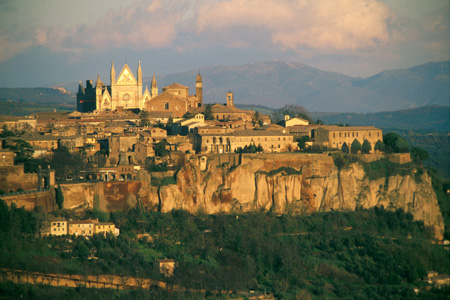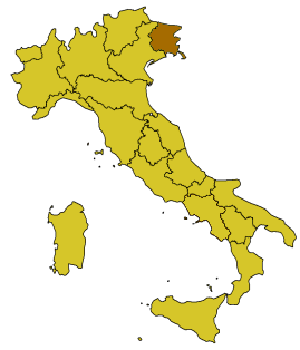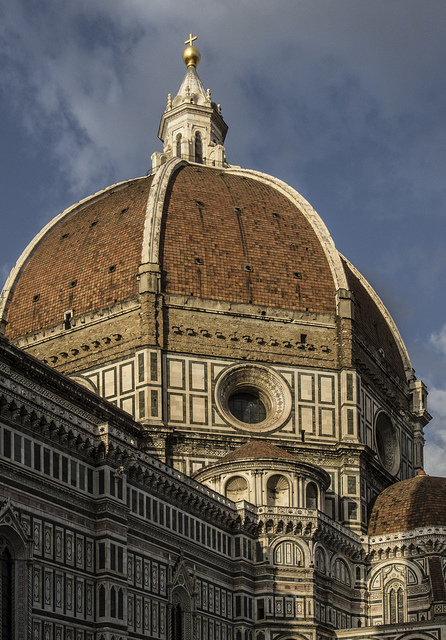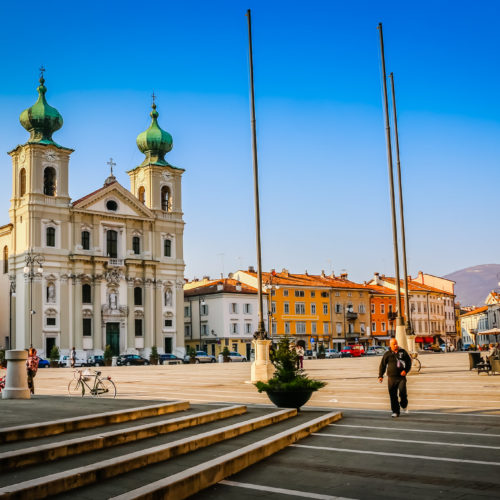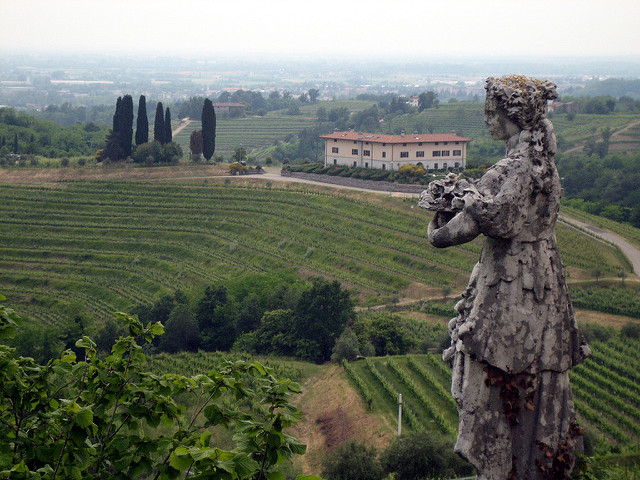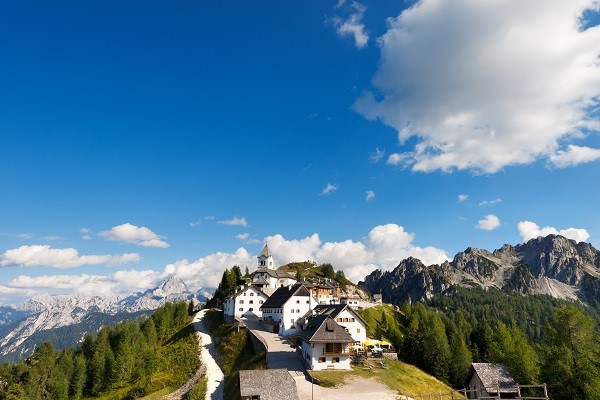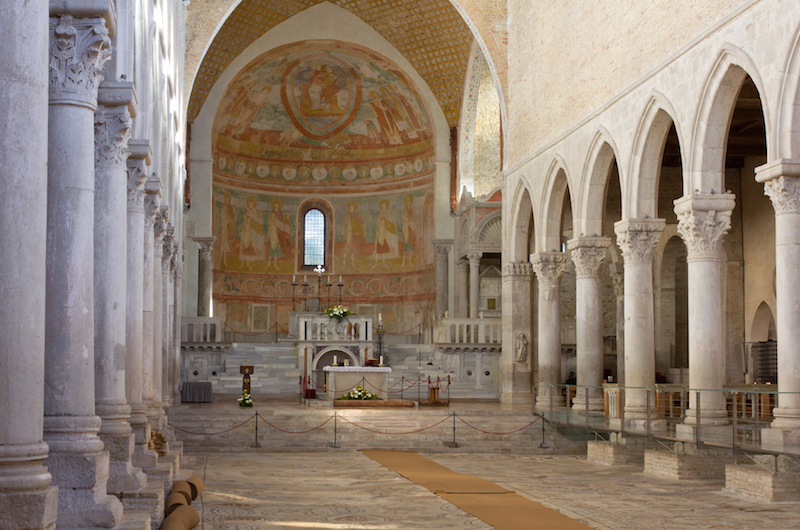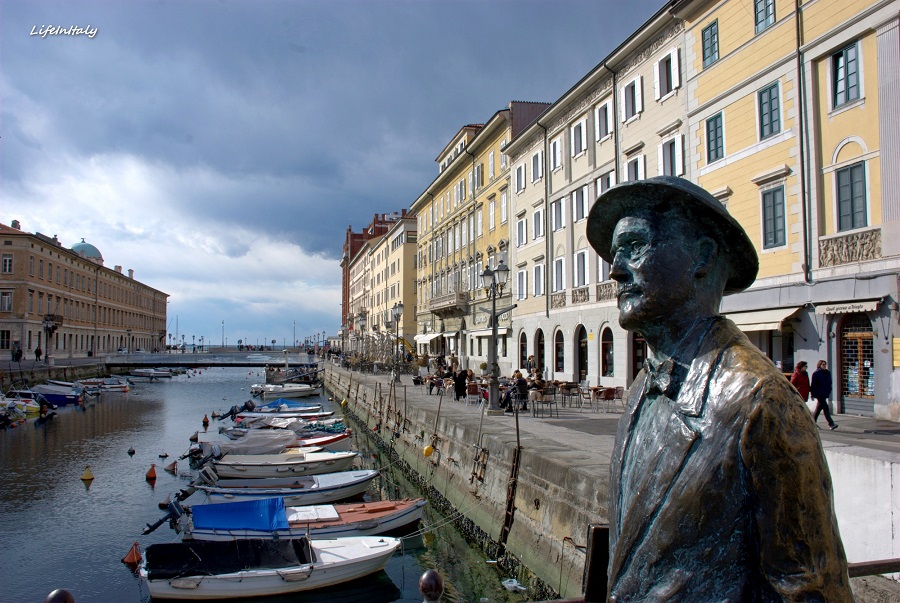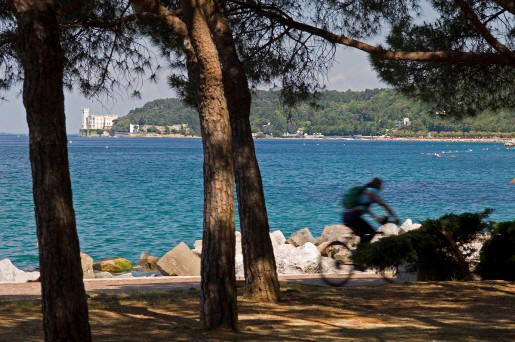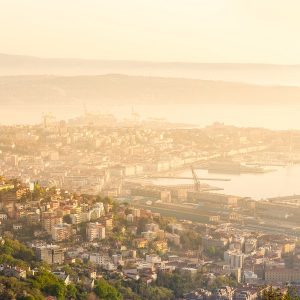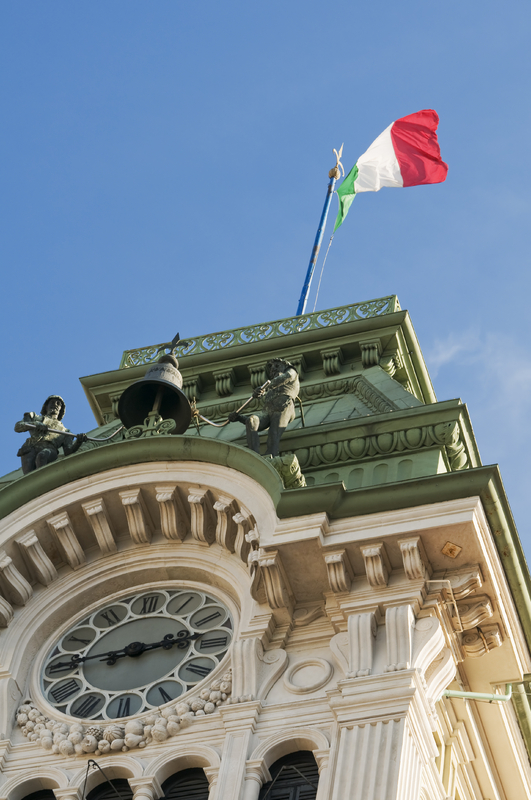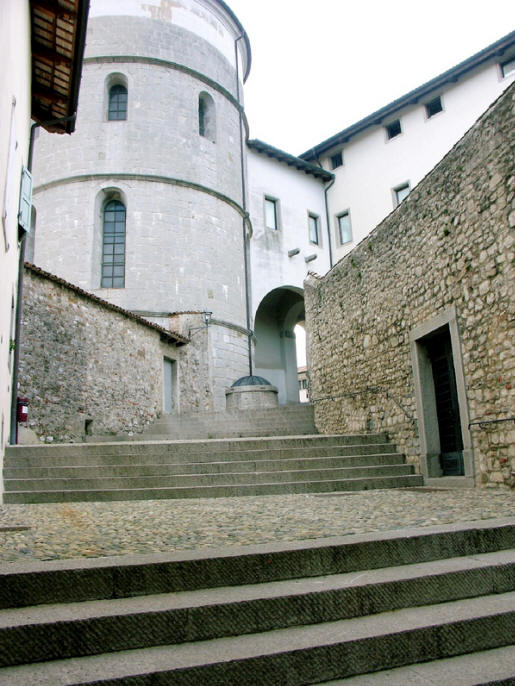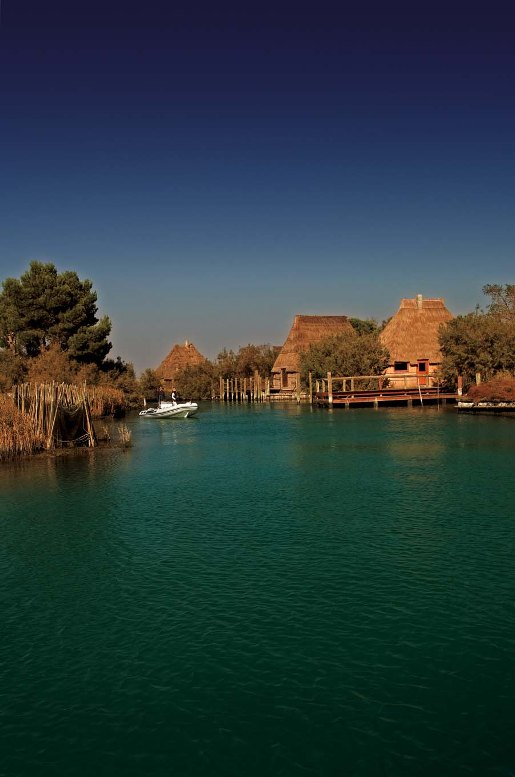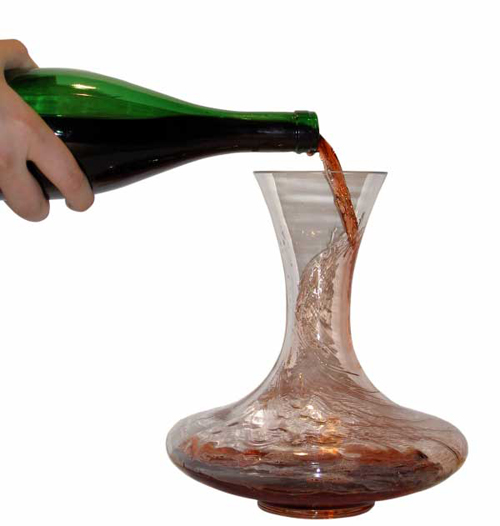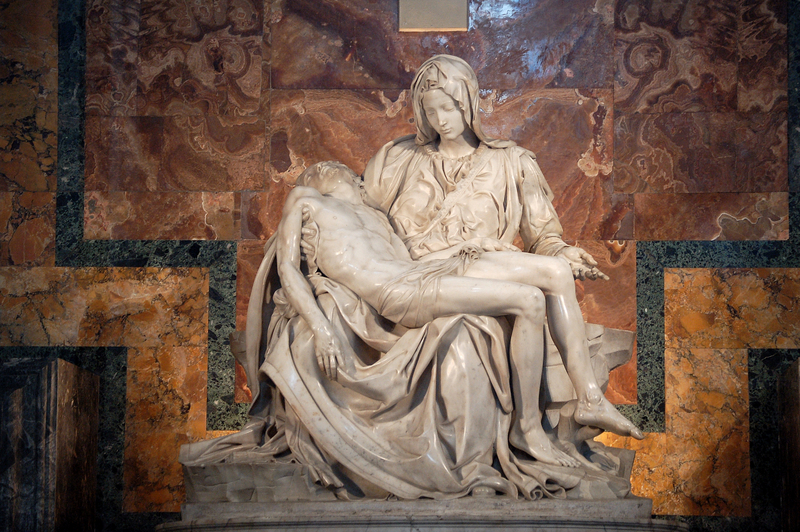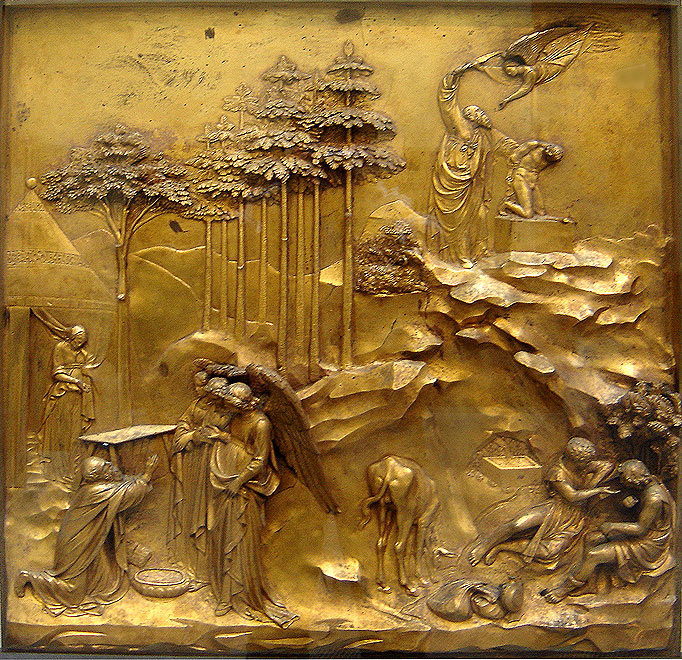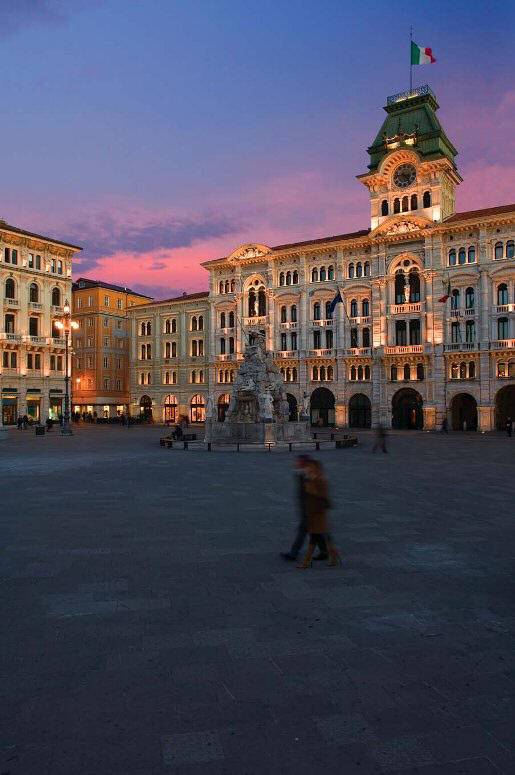
Cities in Friuli, Italy
Continuing our journey around the cities in Friuli Italy. If you didn’t yet, make sure to check out the first part of this article to learn more about the cities in Friuli Venezia Giulia, Italy!
Jewish Culture in Trieste, Italy
Trieste boasts an age-old Jewish tradition: there are traces of the establishment of a large community dating back to the 13th century. The monumental synagogue is deemed the most successful construction of its kind in Europe and the sheer magnitude of its interior is a reminder of the importance the Jewish community has had in Trieste. Two other significant testimonies to the Jewish culture are the Museo Carlo e Vera Wagner and the Jewish library.
A Journey Through Flavors of Trieste
Austrian, Hungarian, and Slav influences combine in a unique and inimitable synthesis in Trieste. Unusual osmizas and ancient pastry shops offer many specialties to delight your palate. Trieste is definitely a must-see of the cities in Friuli, Italy! Trieste is also an underrated town in Europe but believe me it’s worth it!
The Trieste culinary tradition has influences that can be found in no other part of Italy, coming as they do from German, Slav, Hungarian, and even Greek cuisine. The rebechin is one of the most typical customs, consisting of a traditional snack consumed at any time of the day, usually at the counter in one of the buffet bars dotted all across the town.
Slovenian tradition also originated what has become a real tourist attraction, the osmizas: private houses in Carso are opened up for short periods of time, where you can taste local specialties (wine, salamis, and cheeses) in a charming rural setting. The inland offers a host of top-quality products: besides its wine, particularly its white wine, cooking connoisseurs and experts also greatly appreciate the olive oil produced in Trieste Carso.
One of the symbols of Julian cuisine is Jota, a very tasty thick soup made with beans, potatoes, and sauerkraut. Originally a “poor men” dish, today it is also served in the finest restaurants. As for its desserts, Trieste has retained the best of the Mitteleuropean traditions. Its pastry shops are lined with cakes of Austrian, Hungarian, and Slav origin, including krapfen and strudel, Sacher cakes, Dobos and Rigojanci, as well as Presnitz and Putizza.
A break dedicated to the palate becomes a real journey through flavors, aromas, and colors belonging to different cultures, which find a unique and inimitable synthesis in this city. Trieste is definitely a must-visit of the cities in Friuli, Italy!
A Tasty Sea
Seafood is an essential ingredient in Triestine cuisine. The town is dotted with countless restaurants, to suit all pockets, serving fish and shellfish in all shapes and sizes. Sardoni is the most popular fish and they are normally served fried, in breadcrumbs, or in savor (fried and marinated in vinegar and onion). But there is also bass, sea bream, tuna fish, mussels, clams, cuttlefish, and all the seafood the fish market offers.
Udine: Genuine Charm
Another one of the cities in Friuli, Italy, Udine. The heart of Friuli Venezia Giulia and a gateway to a special world, where an ancient language is spoken. Elegant palazzos and charming streets, with “the most beautiful Venetian square on the mainland”, are watched over by an ancient castle. The hill it was erected on is said to have been built by Attila so he could watch Aquileia going up in flames.
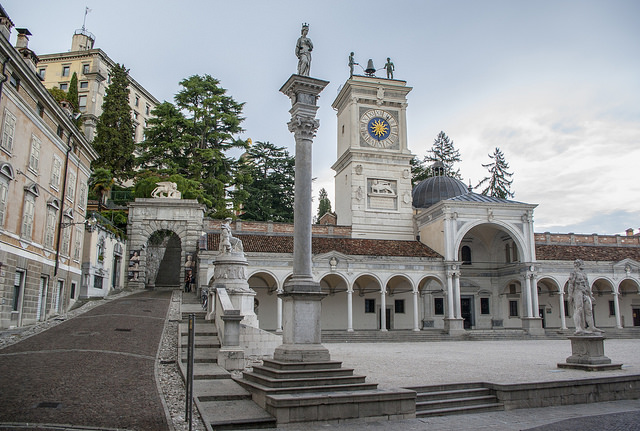
Udine, a small gem in the heart of Friuli Venezia Giulia, offers you a genuine experience: it is the gateway to a culture expressed through unusual, ancient traditions. Admiring the facades of the historic palazzos, enveloped in a special atmosphere and surrounded by people chitchatting in Friulian, the local dialect, is a sensation you can only find here. From Piazza Libertà, recognized as “the most beautiful Venetian square on the mainland”, richly adorned by the Loggia del Lionello and the Loggia di San Giovanni, you walk under the stunning Arco Bollani to reach the castle complex, today housing the Civici Musei, the town museums. Legend has it that the castle was erected on a hill built by the Huns to enable their warlord Attila to watch the spectacle of Aquileia going up in flames.
Do go for a stroll along Via Mercato Vecchio, where the market was held in ancient times. In between fashion shops and ancient trattorias, you can admire beautiful noble palazzos, such as Palazzo del Monte di Pietà, with its richly decorated Baroque chapel, lined with valuable gilded leather painted panels.
Arriving in Piazza Matteotti or “Piazza delle Erbe” is a magic moment at any time of the day: the charming palazzos embracing this “town salon” overlook the market in the morning and bars teeming with people at night.
Udine: “A Glass of the Good Stuff”
The rituals revolving around the osterias in Udine express warmth and hospitality. Discovering them is like being suspended in time, a festive time. If you’re in the region experiencing Udine is a must-do within the cities in Friuli, Italy!
Visitors to the town should make a point of visiting one of the many osterias located throughout the historic center. Enjoy the experience of entering a typical osteria and ordering “un tajut di blanc o di neri”, a glass of white or red wine, accompanied by a crostino with flavors from Friuli Venezia Giulia, and you may even hear the typical greeting “Mandi”!
This will give you an idea of the unusual character of the Friulians. The modern, bustling town is still dotted with countless osterias “like they were in olden times”; they often feature a fireplace where chestnuts are roasted in winter, or friends get together for a game of cards. The atmosphere is warm and cozy, there is a friendly rapport with the owner and you feel as if you are in your own home.
A good time to go to an osteria, to get to know the local habits and experience Friulian hospitality, is just before mealtimes when the locals meet up for an aperitif.
Highlights of the cities in Friuli, Italy
Stay healthy for a long time. It’s a Friulian telling you to.
“Mandi” is one of the words you’ll most often hear echo through the streets. This is the typical Friulian greeting. The etymological interpretation of the Latin-derived word lies somewhere between “mane diu” (long health to you) e “mane cum Deo” (may God be with you). Friulian is a neo-Latin idiom, associated with the other Romance languages of the Latin matrix. It has been further enriched by late-Roman, Lombard, and Germanic contaminations. Besides Udine and its province, it is also spoken in some parts of Pordenone and Gorizia.
Today Friulian is also used in artistic expressions: in the theatre, in poetry, and in literature, and to add color to song lyrics.
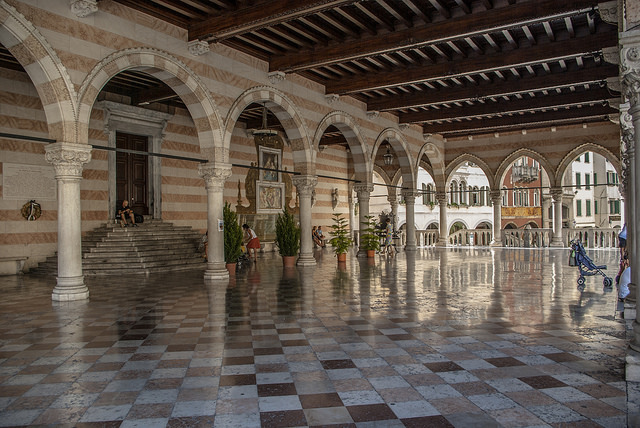
Udine: Tiepolo’s beautiful works
The great eighteenth-century artist reached artistic maturity in Udine, with a spectacular cycle of frescoes in Palazzo Arcivescovile and beautiful paintings housed in the Oratorio della Purita .
Udine is also known as the “City of Tiepolo”, as the great eighteenth-century artist spent an important period of his life here, as one of Patriarch Delfino’s guests. In Friuli Venezia Giulia, Tiepolo evolved towards a more captivating naturalism and a brighter palette, reaching what is defined as the period of his pictorial maturity.
His creativity came alive in Palazzo Arcivescovile, embellished by a spectacular cycle of frescoes, and in the Duomo, where the famous artist frescoed the Cappella del Santissimo Sacramento. The Oratorio della Purità houses one of Tiepolo’s greatest masterpieces and is well worth visiting.
Artistic Genius
The Galleria d’Arte Moderna, a section of the Civici Musei and Gallerie di Storia e Arte, displays over three thousand works, including paintings, graphic arts, and sculptures, and thousands of architectural drawings, in particular by Friuli-born Raimondo d’Aronco, considered one of the leading Italian Art Nouveau architects, who even designed mosques and palazzos in Istanbul.
A special section houses creations by Dino, Mirko, and Afro Basaldella: the latter’s genius makes him one of the top Italian artists of the twentieth century. One of the main private Italian collections of contemporary art was bequeathed to the gallery in 1983 by Maria Luisa Astaldi. This legacy has added great value to the exhibition and includes works by De Chirico, Morandi, Sironi, Chagall, and Picasso.
Pordenone, a stroll along the Corso…
An elegant porticoed street is the pivot of town life, with beautifully dressed shop windows, and charming coffee houses: its side lanes are dotted with characteristic restaurants. Glance upwards and you will see splendidly frescoed palazzos.
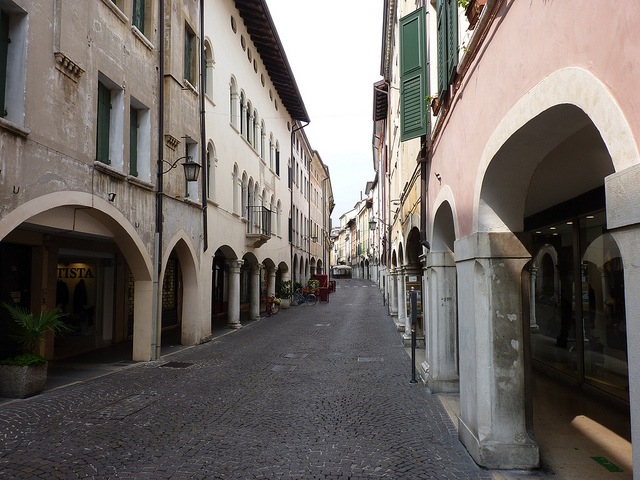
Corso Vittorio Emanuele, or more simply, Corso, is the town’s elegant high street, and undoubtedly the heart of Pordenone life. It is a delight to wander under one of the continuous porticoes, the longest in Europe, and be distracted by the shop windows displaying special products in the ancient palazzos, or to enter the charming alleyways flanking the Corso, in search of one of the excellent trattorias and characteristic restaurants serving local specialties.
Sitting down at a table in one of the countless bars to savor special selections of coffee, chocolate, or fine wine, you can gaze at the splendidly frescoed facades on the palazzos overlooking the Corso, from the more colorful and picturesque 14th-century edifices to the more elegant, stately Venetian palazzos. As you sip an aperitif or go for a stroll around the town, just lift your eyes and you will feel immersed in an age-old atmosphere.
Teatro Verdi also appeals to visitors. The theatre has been recently renovated and its modern, innovative design blends in very well with the dynamic life in Pordenone.
Pordenone …. and past the noble palazzos
Ancient edifices, once the dwellings of wealthy families, are now earmarked for culture and art.
In Pordenone, a large number of historic edifices have been assigned to culture and art, exhibitions and shows, such as the former Convento e Chiesa di San Francesco, adorned with 15th-century frescoes and a painted cloister, and Palazzo Pera and Palazzo Sbrojavacca, today the headquarters of the Provincial administration.
19th-century Corso Garibaldi is also fascinating; it was once home to many wealthy families who built their marvelous stately palazzos there, including Palazzo de’ Spelladi, where Emperor Franz Joseph stayed.
There are interesting museums to visit too, including the Museo delle Scienze located in the 16th-century Palazzo Amalteo and the Museo Civico d’Arte, housed in Palazzo Ricchieri, with its host of paintings by il Pordenone, the leading Friulian Renaissance painter.
An Appointment Downtown
Each year, in September, the city becomes a bustle of culture and life during pordenonelegge.it; the book festival par excellence which turns Pordenone into a mini capital of culture in Friuli Venezia Giulia.
Peaceful niches where nature reigns. Pordenone’s parks are near the historic centre.
After a leisurely stroll around the town center, go for an enjoyable walk along the pedestrian path flanking the banks of the Noncello river, with its wealth of vegetation and protected fauna, and discover another side to Pordenone; it is a city that knows how to express itself in the language of nature, leaving the bustling town life aside for a moment. The town parks are immersed in a peaceful atmosphere, which you can enjoy at a stone’s throw from the historic center.
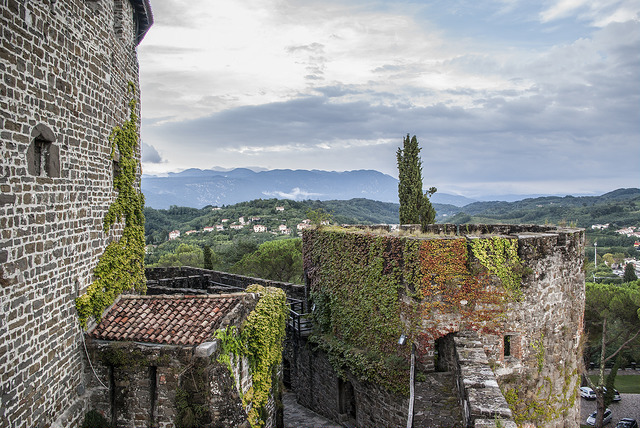
Gorizia: An appealing encounter
Gorizia is another of the cities in Friuli, Italy. A “garden town”, abounding with tree-lined avenues, elegantly expresses all its Mitteleuropean essence. Its mild climate led to it being chosen as a residence for Hapsburg functionaries, hence its name, the “Nice of Austria”.
Gorizia is a melting pot of different cultures and today it is a “garden town” welcoming its visitors to its tree-lined avenues and stately villas. The layout of its streets and edifices, its churches adorned with their characteristic onion-shaped domes, and the atmosphere in its coffee houses are all a constant reminder of its Mitteleuropean matrix.
Wandering along its main avenues, Corso Verdi and Corso Italia, admiring the historic villas in their spacious gardens, you can feel the late 19th-century atmosphere which gave Gorizia its name as the Nice of Austria, residence to Hapsburg functionaries who chose to live there for its pleasant climate.
Many of the historic palazzos offered hospitality to illustrious people. You can trace the steps of the legendary Casanova, or breathe in the creative skills of Goethe and Goldoni in Palazzo Lantieri. The Gorizia palazzos also offered hospitality to the powerful and mighty, among whom were Pope Pio VI, Napoleon, and Charles V.
Gorizia: A leap into history
In the majestic castle, a symbol of the town, follow the chemin-de-ronde around the walls and gaze at the land dotted with vineyards. Then, visit the museums of History and Art, of the First World War and the unusual museum on fashion and applied arts.
The castle is a symbol of the town and its original historic center with its charming hamlet. It offers a stunning view of its splendid surroundings, with a marvelous panorama of vineyards, as well as of the territories still scarred by the trenches from the two world wars: real historic wounds you can visit at the battle sites. You can go for a wonderful walk around the castle’s exterior walls as far as the Torre dell Orologio, the bell-tower, where the armigers did their rounds.
This is a real leap into history, enhanced by visits to the museums, including the Museo del Medioevo Goriziano and the Musei Provinciali di Borgo Castello adjacent to Casa Tasso and Casa Dornberg, which house important permanent collections, such as the Museo della Grande Guerra, the interesting museum on world war I, the Collezione Archeologica, the Museo di Storia e Arte and the Museo della Moda e delle Arti Applicate, the only museum on fashion and the applied arts of its kind.
This is where the last wall of the former “iron curtain” fell. Where today you can walk with one foot in Slovenia and the other in Italy.
For half a century, Gorizia was the symbol of the cold war, crossed by the “iron curtain”. Piazza Transalpina was physically divided by a wall until 2004 and today you can still walk across it with one foot in Italy and the other foot in Slovenia: undoubtedly a unique experience, which only Gorizia can offer.
The city has also been an important town in Italy’s more recent history, experiencing moments of sadness but also of great joy, images of which can be seen as you walk in its streets and squares, listening to the locals’ stories.
Be sure to visit Part I of this article on Cities In Friuli
Agenzia Turismo Friuli Venezia Giulia




